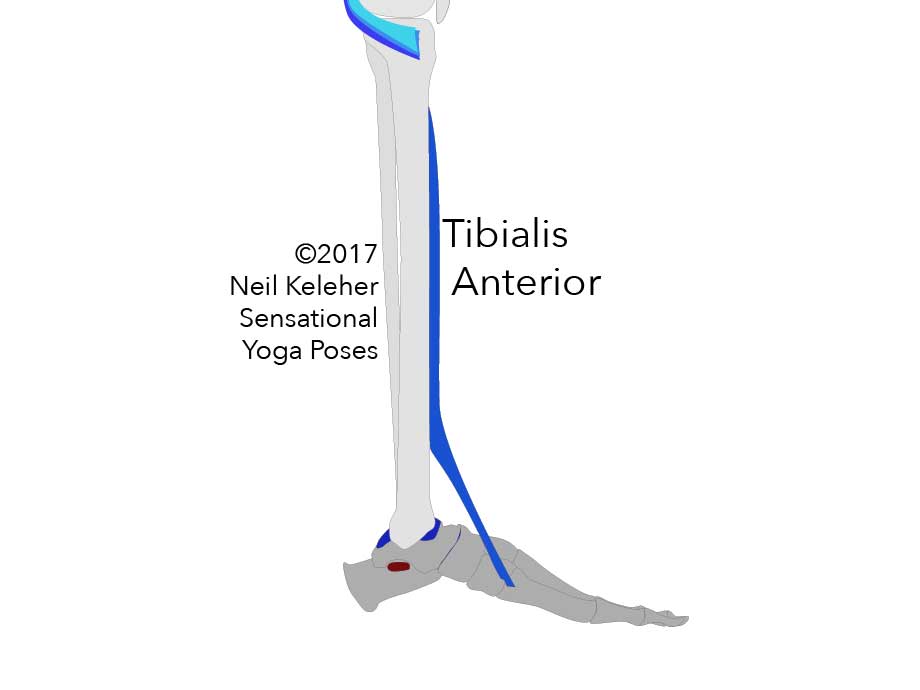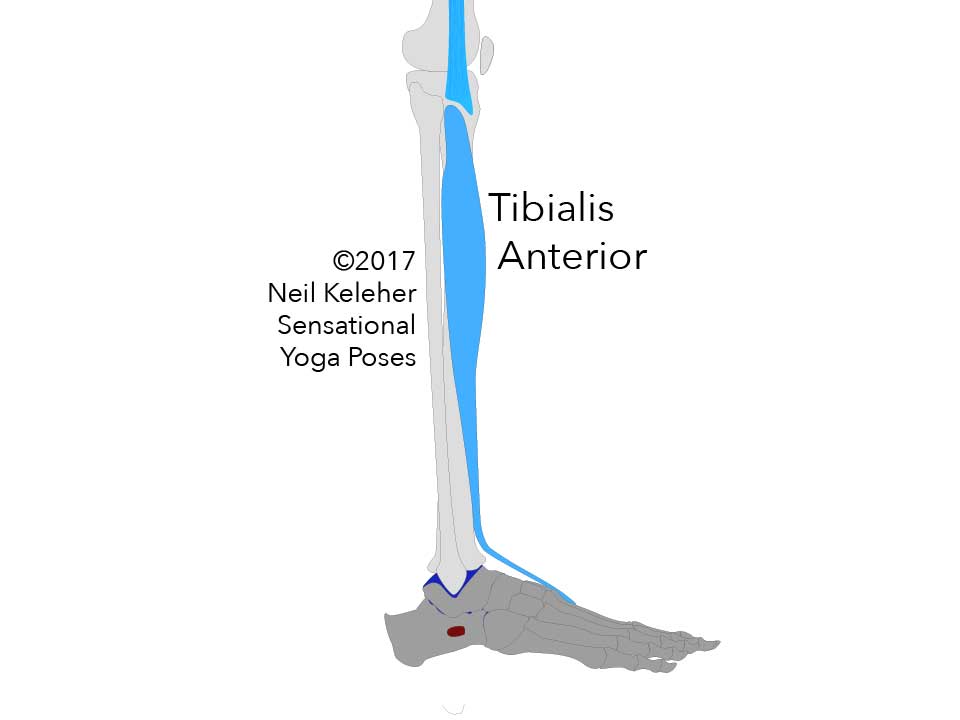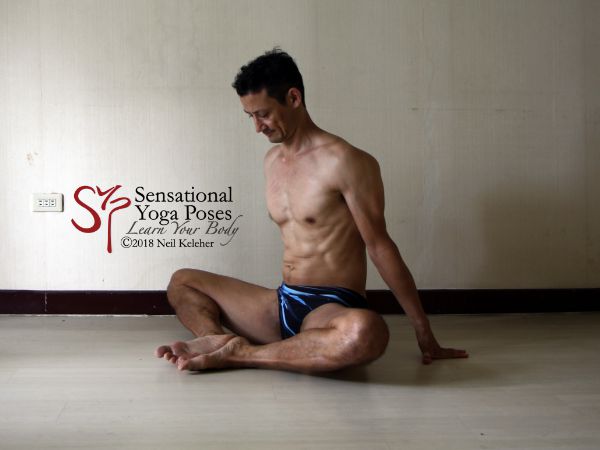Tibialis Anterior
Rotating the shin relative to the foot (or stabilizing it)
The Tibialis Anterior is situated at the front of the shin. The upper part of its sheath is at least partially continuous with fibers of the IT Band
As a result, if the lower end of the muscle is anchored, it in turn can help to anchor the front portion of the IT Band (the part that is acted on by the Tensor Fascia Latae).
The Front Edge of the Shin
The tibia is one of the two bones that make up the lower leg. It is the more substantial of the two bones and has a shaft with a triangular cross section. One edge of this triangle shaft faces forwards, forming the leading edge of the shin bone. The tibialis anterior muscle sits to the outside of this edge.
The bulk of the tibialis anterior muscle run
Lower Tendon of the Tibialis Anterior
The tendon of the tibialis anterior muscle becomes prominent about half way down the shin. It passes under a belt of connective tissue called the extensor retinaculum located more or less at the front of the ankle.
Where the bulk of the tibialis anterior sits towards the outside of the front edge of the shin, the tendon passes over this front edge to run along the inside edge of the upper surface of the foot. From there is attaches to the top surface of the inner most cuneiform.
This cuneiform is the first isolated bone of the big toe.
The tibialis posterior tendon also attaches to top surface of the rearmost part of the innermost metatarsal.
The metatarsal is the next bone of the big toe after the cuneiform.
If these bones of the foot are anchored, tibialis anterior activation can be used to rotate the shin inwards relative to the foot.
This is the opposite action of the tibialis posterior, which can be used to rotate the shin outwards relative to the foot.

Medial/Inside View

Lateral/Outside View
Anchoring the Tibialis Anterior While Standing
The tendon of the peroneus longus passes from beneath the foot from the outside edge to attach to the underside of the innermost metatarsal.
Assuming a standing position so that there is weight on the foot in question, an active tibialis posterior can be used to rotate the shin outwards relative to the foot helping to form the inner arch of the foot.
In turn, peroneus longus (and perhaps peroneus brevis) can also be activated to help stabilize the heel bone against lateral tilting while at the same time stabilizing the outer arch of the and the inner most metatarsal.
A stabilized inner most metatarsal gives the tibialis anterior a stable anchor point so that it can activate to help create a forwards pull on the shin while at the same time resisting the outward rotation force created by tibialis posterior.
If the peroneus longus is relatively relaxed, tibialis anterior activation can create an upwards pull on the inner most metatarsal so that the inside edge of the forefoot lifts off of the ground.
Tibialis Anterior Activation in Non-Weight Bearing Positions
If the feet aren't bearing weight, as in staff pose with the feet straight ahead, the tibialis anterior can be used with tibialis posterior to help turn the feet inwards.

Staff pose with feet turned inwards with the aid of Tibialis anterior.
With knees bent and feet together as in bound angle pose, tibialis anterior can help turn the soles of the feet upwards.

Bound angle with soles of the feet turned upwards with the aid of tibialis anterior.
Note the prominent tendon of tibialis anterior at the front of the ankle.Published: 2020 08 05






